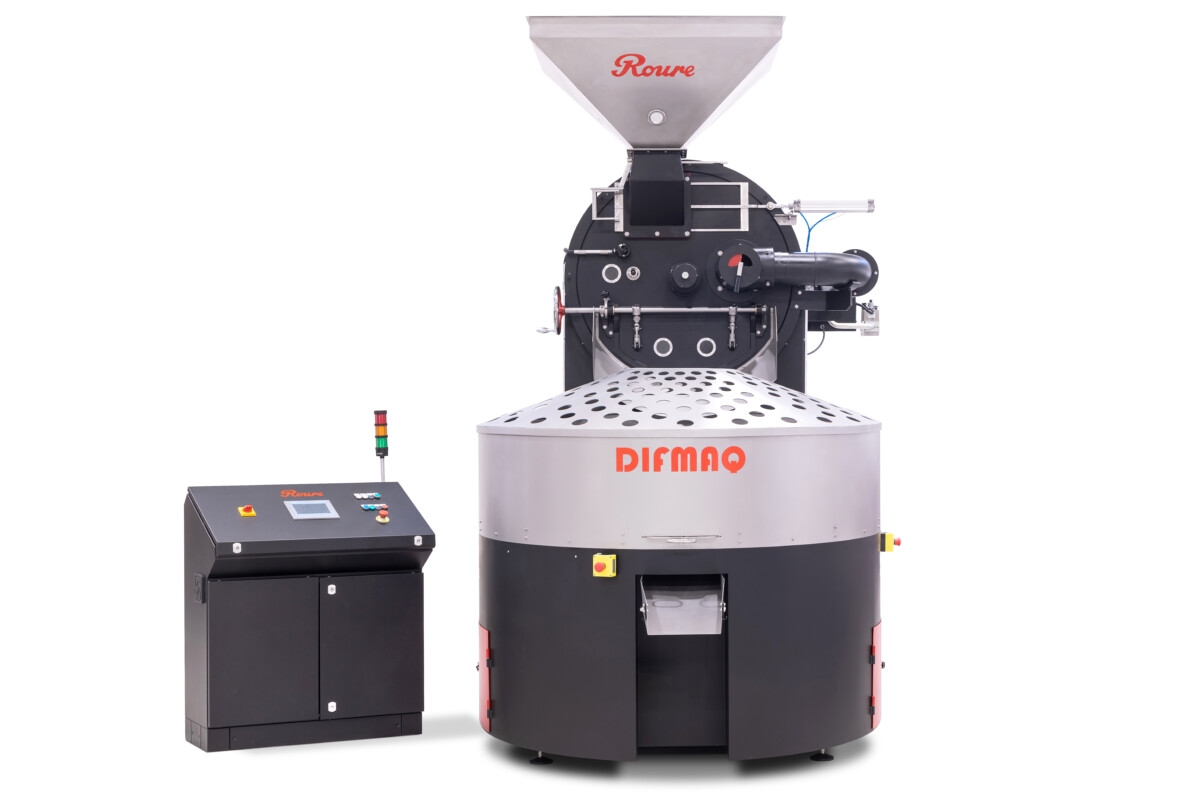
Our customers often ask us what temperature they should roast, and although “every master has his own method”, we are going to give some recommendations as a starting point for those who want to start roasting green coffee.
The roasting of green coffee beans is essentially carried out in three stages.
As the temperature of the coffee beans is raised by the action of heat, they are first dried, then roasted and subsequently mild or cooled.
Depending on the temperature of the grain (not the temperature at the burner outlet), the appearance and the sensory and organoleptic properties change.
From 120 to 170ºC
This stage takes approximately 70% of the total roasting time and dries out the moisture content of the beans, which is usually around 12% at the time of drumming.
At 140°C the green coffee turns yellow and in the process from 140 to 160°C it turns brown and the water evaporates.
From 160-170°C, the volume of the grain starts to increase.
From 170 to 200ºC
The second stage of roasting, pyrolysis (thermal fragmentation of large molecules in the absence of oxygen) begins in the coffee bean. This is a spontaneous exothermic reaction that occurs internally in the bean at high temperatures in a period of time of less than one minute and is characterized by crackling of the coffee beans. The Maillard reaction also occurs at this stage.
When the coffee is around 170º it acquires a cinnamon colour. It is at this point that the first crackle or crackle occurs, which is more or less intense depending on the type and freshness of the coffee. This stage takes no more than a minute and it is at this point that the decomposition of sugars, proteins and fats begins and CO an CO2 are produced. The colour begins to turn dark brown.
From 190º, the coffee crackles again and finishes developing its flavour, aromas and gases, and its colours intensifies. The sugars caramelize, and there is a polymerization and condensation reaction.
When the bean reaches 200º inside, the development of aromatic substances and brown colour intensifies.
200 to 210ºC
The final temperature, depending on the type of machine and desired colour, may vary.
Generally, for the roasting of espresso coffee in our country, this has been set at around 206ºC inside the bean. Once the roasting is finished, the coffee must be cooled immediately to prevent the exothermic reactions from continuing and the bean from continuing to roast.
Once the beans have been tempered, they are cleaned to remove impurities, just as they where before roasting, when they were still green. After roasting, the bean has undergone a major transformation, the sugars have been caramelized, more than seven hundred, new compounds responsible for the taste have been created, and the degradation of amino acids has given rise to oxazole and pyrazine in different quantities, responsible for the aroma of the coffee, among other reactions.
Source: Forum del Café Magazine (2016), nº65, page 30.
🌐 If you want to know more about our range of DIFMAQ ROURE roasters, please visit our catalogue on the web site https://difmaq.com/en/roasters/
🌐 If you want to know more about the coffee forum, visit their magazine http://www.forumdelcafe.com/










